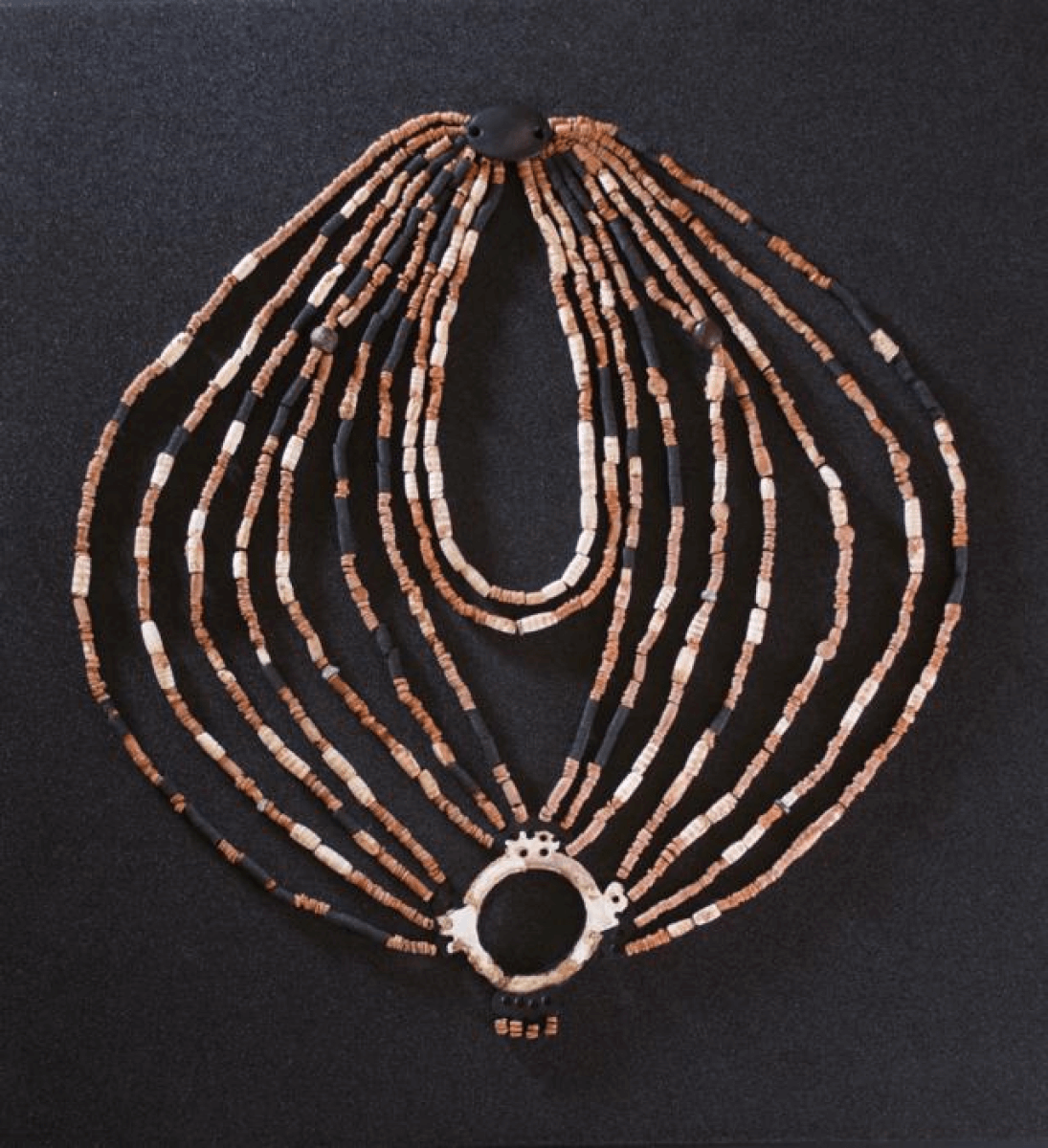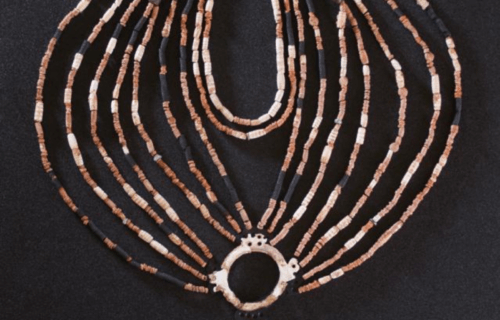BARCELONA, Spain — The discovery of one of the oldest Neolithic pieces of jewelry, buried with an eight-year-old girl, illuminates the sophistication and craftsmanship of our ancestors 10,000 years ago. The necklace, consisting of 2,500 elements, including amber beads and an engraved mother-of-pearl ring, was unearthed at the Neolithic village of Ba`ja in present-day Jordan.
An international team says it was interred with an eight-year-old girl between 7400 and 6800 BC, and although found in fragments, has been meticulously reconstructed by archaeologists.
Comprised of 2,500 colorful stones and shells, two exceptional amber beads (the oldest known in the Levant), a large stone pendant, and a delicately engraved mother-of-pearl ring, this multi-row necklace stands as one of the most ancient and impressive Neolithic ornaments ever discovered. It involves meticulous work and the use of exotic materials imported from other regions of the world.
Now on display in the Petra Museum in Southern Jordan, the necklace uncovers complex social dynamics among community members, including artisans, traders, and high-status authorities who would have commissioned such pieces.

“The reconstruction results exceeded our expectations as it revealed an imposing multi-row necklace of complex structure and attractive design,” researchers write in the journal PLoS ONE.
“Through multiple lines of evidence, we suggest that the necklace was created at Ba`ja, although significant parts of beads were made from exotic shells and stones, including fossil amber, an unprecedented material never attested before for this period.”
“The retrieval of such an ornament from life and its attribution to a young dead child highlights the significant social status of this individual,” the researchers continue.
“Beyond the symbolic functions related to identity, the necklace is believed to have played a key role in performing the inhumation rituals, understood as a public event gathering families, relatives, and people from other villages.”
The researchers also noted that the necklace is not viewed as solely belonging to the realm of death, but rather as part of the living world, symbolizing collective memory and shared moments of emotions and social cohesion.
Furthermore, the study revealed an unexpected level of connectivity between Ba‘ja and the broader world, and its role in the exchange and trade networks circulating throughout the Levant. This in-depth analysis has allowed a reimagining of one of the oldest and most impressive Neolithic ornaments, believed to have been created to honor a highly distinguished eight-year-old member of the community.
Despite its elaborate design, the necklace was not created for exchange or trade but was instead an integral part of the child’s burial, serving as a significant testament to the cultural practices of that time.
You might also be interested in:
- What was a funeral like 8,000 years ago? Newly discovered child burial site reveals ancient secrets
- Archaeologists reconstruct face of 7th century teen girl — one of England’s first Christians
- Are your affairs in order? What to do now — before you die
South West News Service writer Jim Leffman contributed to this report.

